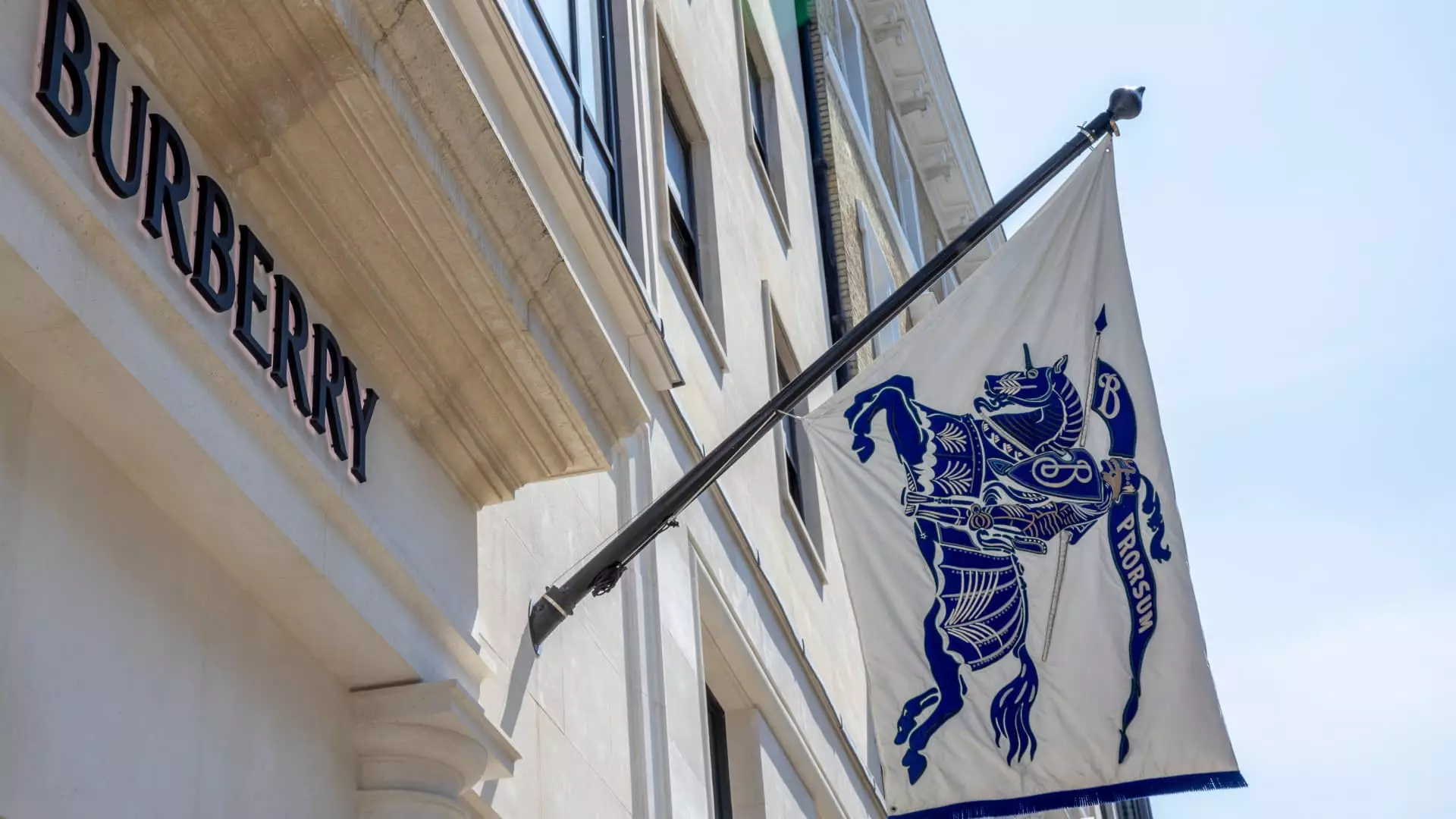Burberry, once a paragon of British luxury and craftsmanship, is now navigating turbulent waters, caught in a perfect storm of declining sales and an evolving global economic landscape. The company recently unveiled sweeping organizational shifts that could lead to approximately 1,700 job reductions. While such drastic measures are often marketed as necessary steps toward recovery, they underscore a more significant problem: the luxury brand appears to be caught off-guard by the very changes it should have anticipated.
Sales figures for the fiscal year reflect the harsh reality of mismanagement. A 12% plunge in revenue is alarming, especially when the luxury sector is expected to be seen as resilient against economic downturns. The company’s latest report hints at a sales decline that was slightly better than analysts’ projections, but even a perceived lesser fall is still a fall, revealing a brand scrambling to maintain its status amid competition from both established designers and up-and-coming labels. In a world where consumer preferences are shifting, Burberry’s legacy might not be enough to guarantee its survival.
America’s Dwindling Glow
The Americas were once a beacon of hope for Burberry, showing promise with robust sales in prior quarters. However, the recent swing into a 4% loss in this crucial market signals a worrisome trend that cannot be ignored. Americans, typically willing to invest in high-quality luxury, seem to be seeking alternatives, and this could indicate a broader consumer sentiment against brands perceived as failing to adapt. The once-prized Burberry trench coat ignites nostalgia, but nostalgia alone is not a strategy for survival in the fast-paced world of modern fashion.
A simplistic analysis would suggest that external factors—like economic uncertainty and geopolitical tensions—are at play. While it’s true that these factors cannot be ignored, attributing Burberry’s struggles solely to the broader landscape feels like a cop-out. This is a company with a rich heritage that has lost sight of its core identity; focusing on innovation and sustainability should have been priorities long before the storm-clouds began to gather. Instead, the brand appears to be reacting rather than planning, a sign of poor strategic foresight.
Geopolitical Whirlwinds and Future Hurdles
Burberry’s strategic outlook is overshadowed by rising geopolitical tensions that threaten not only its market but the luxury sector at large. The company has mentioned “incremental unmitigated tariff risks,” revealing a reticence to engage with the pressing reality that tariffs and trade conflicts can drastically reshape operational viability. This skepticism should serve as a wake-up call; there’s a pressing need for transparency and agility to navigate an increasingly unpredictable market landscape.
Burberry’s CEO, Joshua Schulman, claims optimism about the brand’s future, but the reality on the ground tells a different story. Statements aimed at rallying consumer and investor confidence feel increasingly hollow when not backed by substantive action. Skepticism ripples through the luxury market, and Burberry risks being seen as an outdated icon rather than a forward-thinking entity. Without concrete steps toward reinvention, this might turn into a funeral procession rather than a triumphant revival.
As the luxury fashion industry continues to evolve, brands like Burberry must realize that survival goes beyond the rich tapestry of their heritage. It demands an innovative spirit committed to transformation, responsiveness to market conditions, and most importantly, a recalibration of what luxury truly means in the modern age. Otherwise, the iconic brand might just be the latest casualty of an industry in flux.

